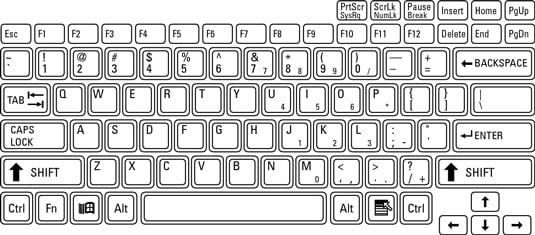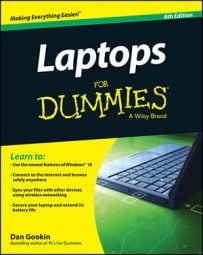A typical laptop keyboard layout has typewriter keys, shift keys, function keys, and cursor control keys.
The below figure illustrates a typical laptop keyboard layout, where all the common keys found on the whopping desktop keyboard have been miniaturized to laptop size. The design intends to let you type without the risk of fire from your fingers rubbing together.

As with a desktop keyboard, you should be able to identify the following basic items on your laptop keyboard:
Alphanumeric, or "typewriter," keys: These are the basic typing keys, each of which is labeled with a character (a letter, number, or punctuation symbol). When you’re typing on the computer, pressing a key produces its character on the screen.
Shift keys: The keyboard sports various shift keys used either alone or in combination with other keys. These include Shift, Alt, Ctrl, and the special Windows keys Win and Context. The Win key appears in the bottom row between the Fn and Alt keys; the Context key appears between Alt and Ctrl. Also note the Esc (or Escape) key, found at the beginning of the top row of keys.
Function keys: These keys are labeled F1 through F12 and are found on the top row of the keyboard, right above the number keys.
Cursor-control keys: These keys can be anywhere around the keyboard, although in this example, they're on the top and bottom right. They include the four directional arrow keys, usually found in an inverted T pattern, as well as the Insert (or Ins), Delete (or Del), Home, End, PgUp (or Page Up), and PgDn (or Page Down) keys.

